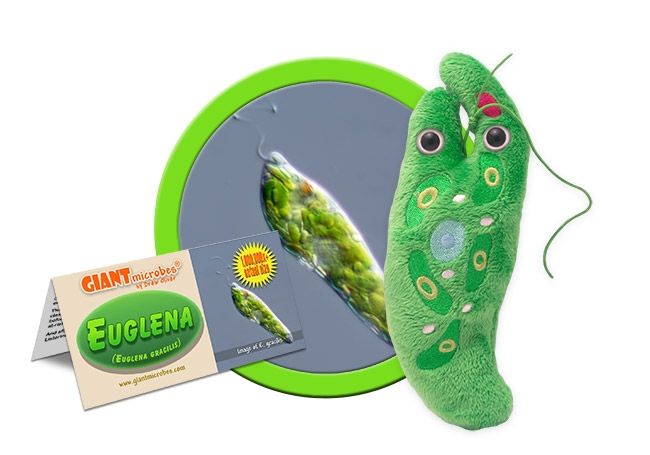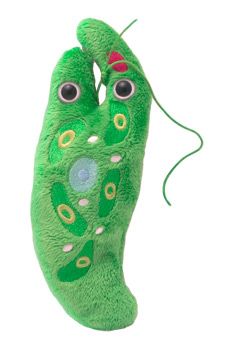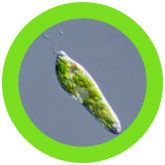Euglena (Euglena gracilis)
Out of Stock
Product Details
Additional Information
| Sizes | Giantmicrobes are based on actual microbes, cells, organisms and other critters, only 1,000,000 times actual size! Gigantic (GG) 16-24" XL (XL) 10-15" Original (PD) 5-8" Keychain (KC) 2-4" with clip |
|---|---|
| Materials | Plush from all new materials. Stuffed with polyester fiber fill. Surface washable: sponge with water & soap, air dry. |
| Packaging | Each plush microbe includes a printed card with fun, educational and fascinating facts about the actual microbe or cell. |
| Safety | Every product meets or exceeds U.S. and European standards for safety. For ages 3 and up. |
All about Euglena (Euglena gracilis)
FACTS: Euglenas are very common aquatic creatures found in fresh water, salt water – and laboratory droplets. They are one of the most studied microscopic organisms!
Euglenas possess the representative features typical of eukaryotic cells, such as a nucleus, mitochondria, golgi bodies, lysosomes, and vacuoles. But their most distinctive characteristics are a long flagellum and a large red eyespot. (Euglena means “good eye” in Greek, though the eyespot is actually an eye lid of sorts which obscures light from other photoreceptors as the cell rotates.)
Although Euglenas can squirm and crawl like other microorganisms, their long flagellum twists like a propeller allowing them to pull themselves forward at a much faster speed. And by navigating towards the light, Euglenas can increase their food production.
In fact, Euglenas play symbiotic host to green algae and other micro-organisms which produce food for the Euglena while benefiting from its ability to move toward light. Sometimes, they are so successful at eating and multiplying they can turn an entire pond green!
Early taxonomists were fascinated by Euglenas because not only can they produce their own nourishment via photosynthesis like plants, but they can also move about and feed like animals by absorbing nutrients from decaying organic matter into their bodies. In the end, it was decided that the Euglena was neither a Plant nor an Animal, but a Protist which is, well, neither a Plant nor an Animal – or both. You decide!
| Description | They’re a natural food source for baby fish, water insects, mussels, and tadpoles. |
|---|
| Name | The name originates from the Greek root words “eu” which means well, and “glene” which means eyeball. It describes the characteristic eyespot, or stigma, that reacts to the brightness of light. |
|---|
| Actual Size | They’re long, flexible cells that range from 15 to 500 micrometers. |
|---|
| Where It Lives | Euglena is a group of over 1,000 species of tiny single-celled organisms that live in freshwater ponds and marshes. |
|---|
| History | Euglena was first identified in the 1660’s by Antoni van Leeuwenhoek, a scientist from Austria. They evolved 500 million years ago, making them 7 times older than T-Rex! |
|---|
| Fascinating Facts | Euglena exhibit both plant and animal characteristics! They ingest green algae for their chloroplasts and use them to make their own food, but they can also eat and digest external food sources. |
|---|






